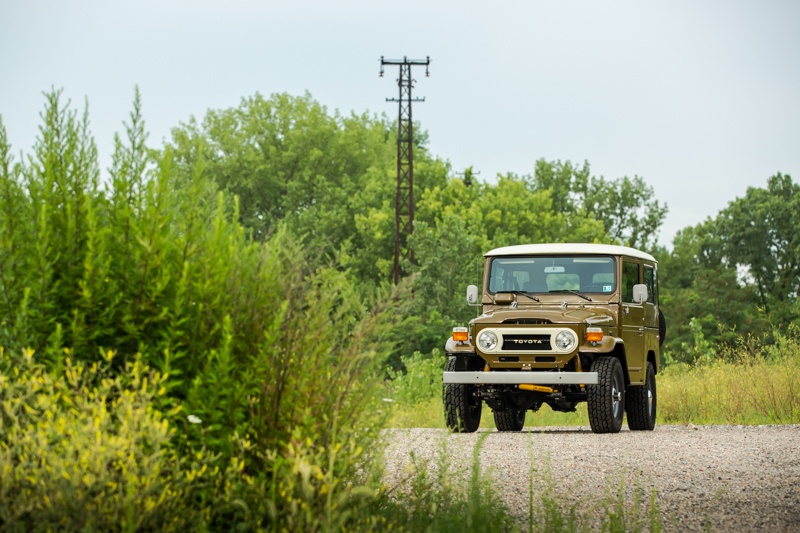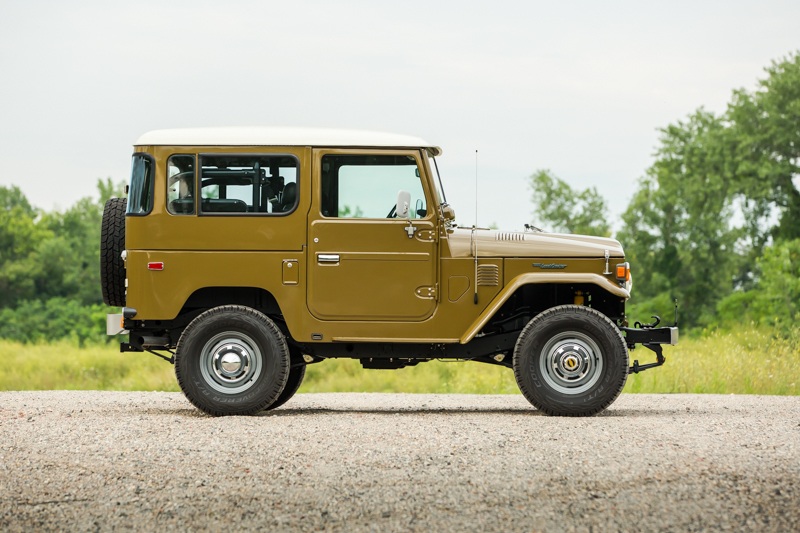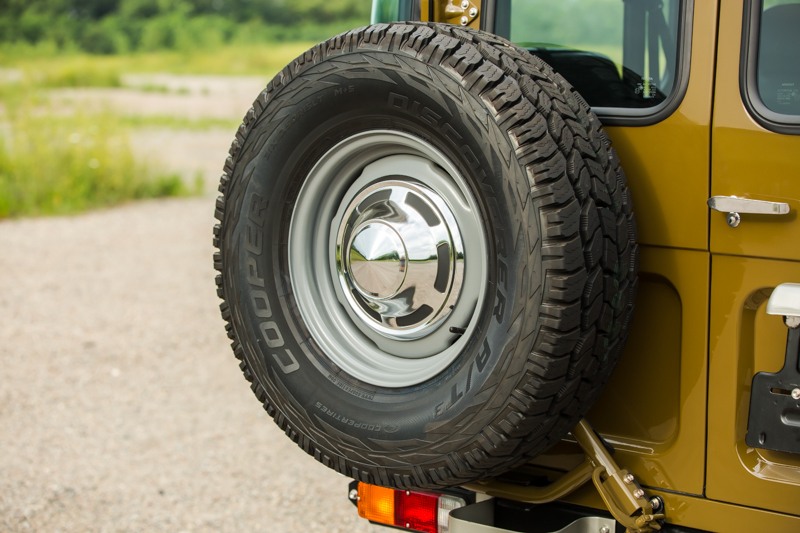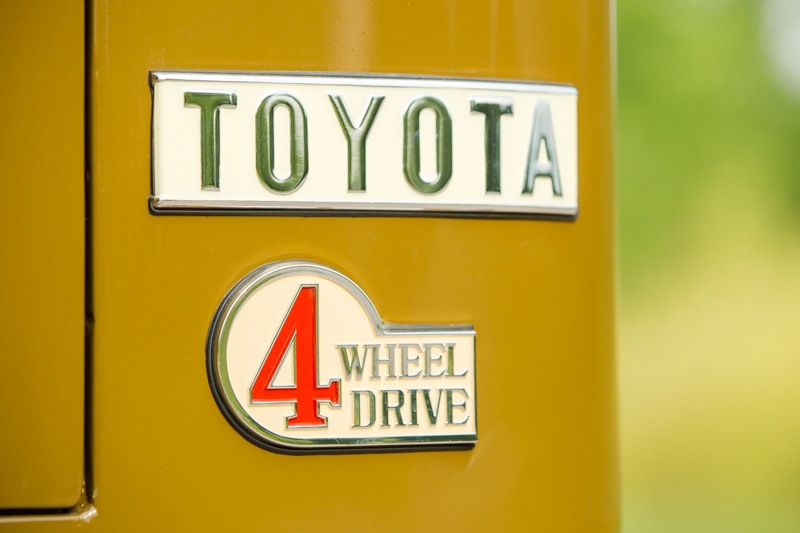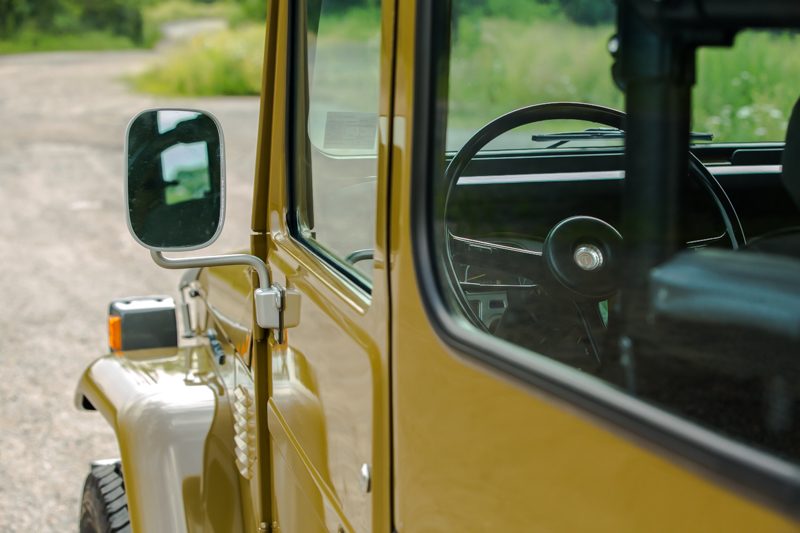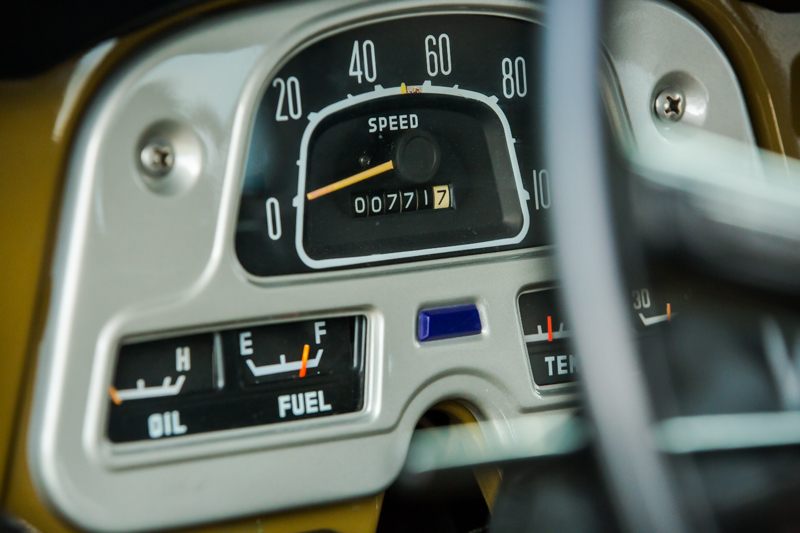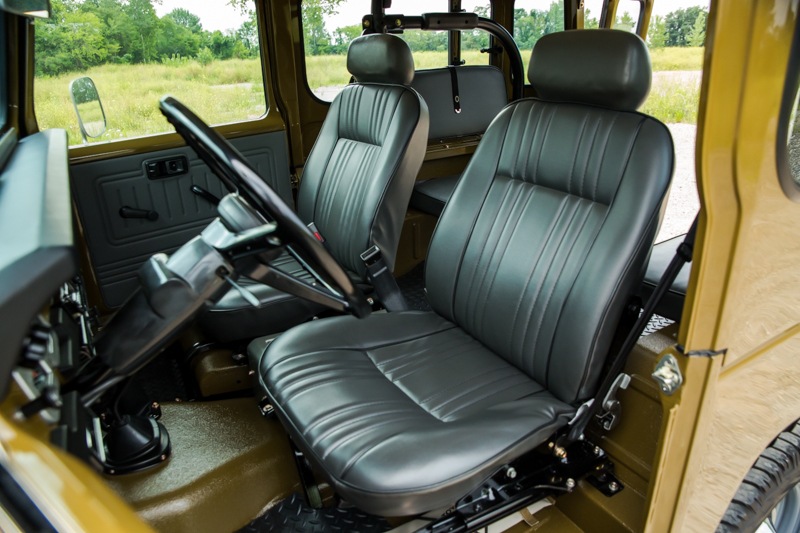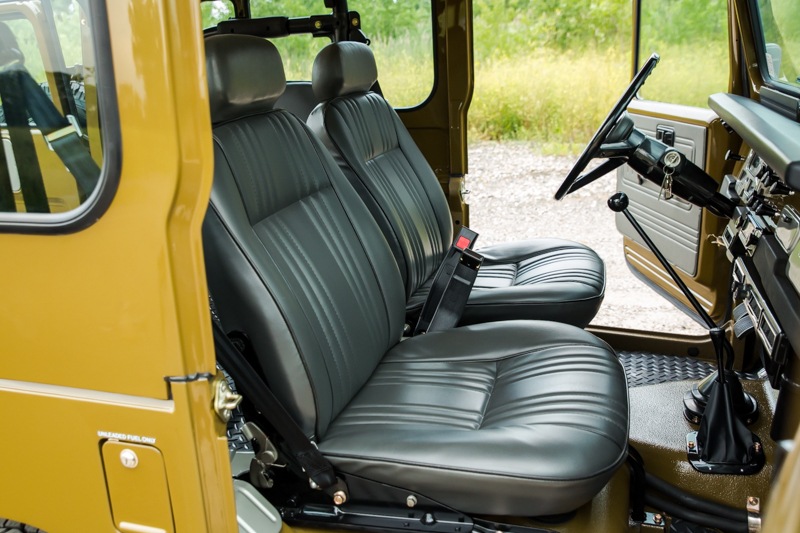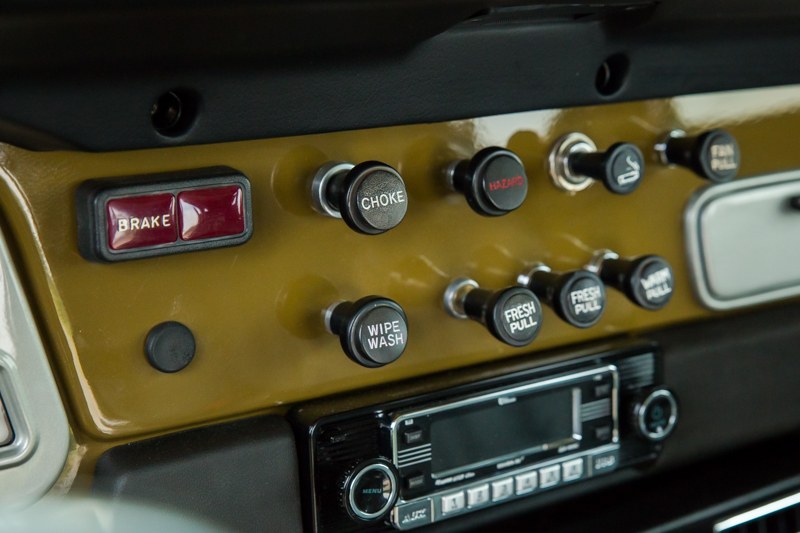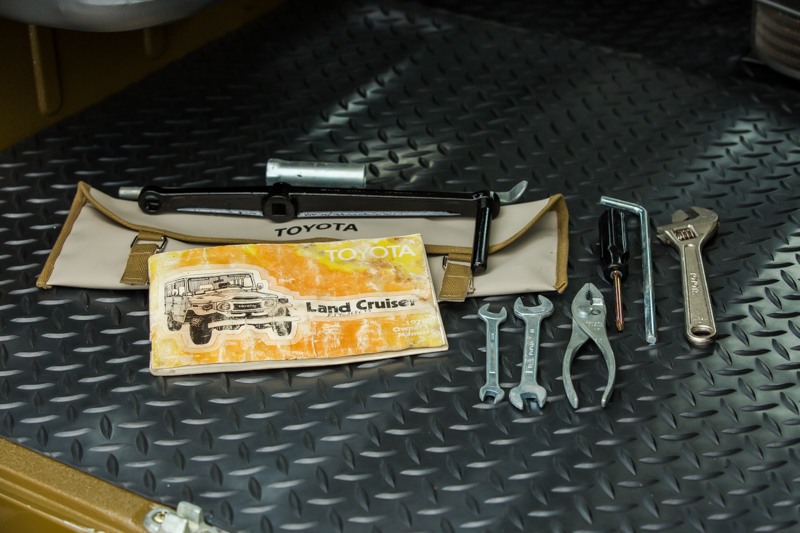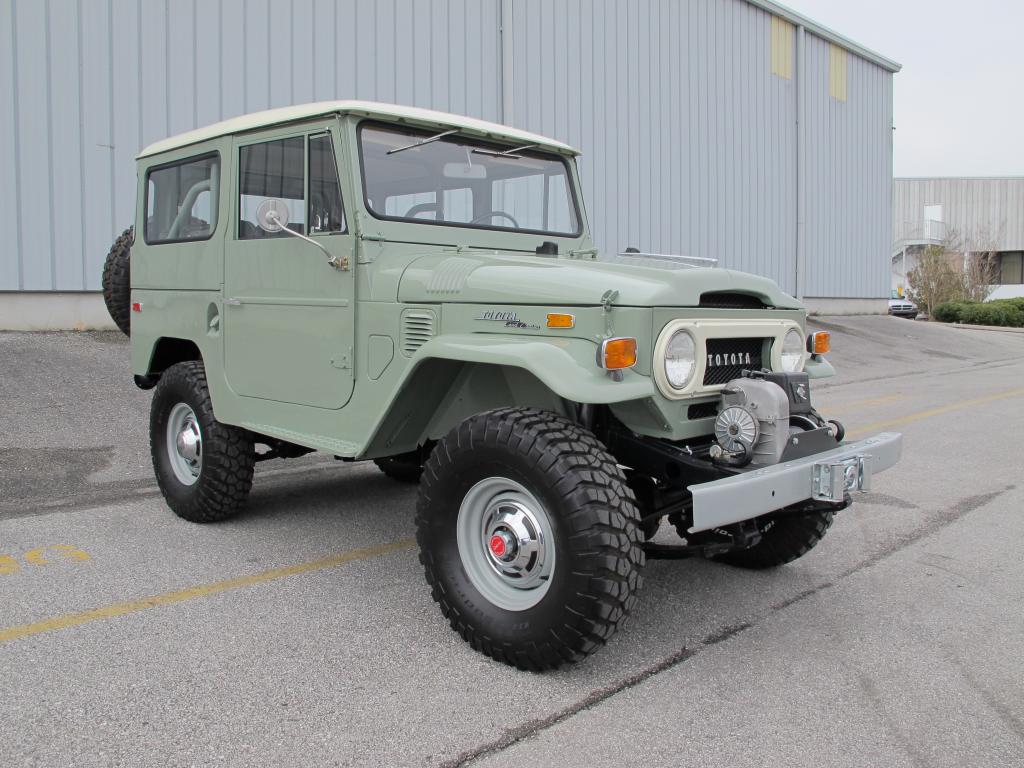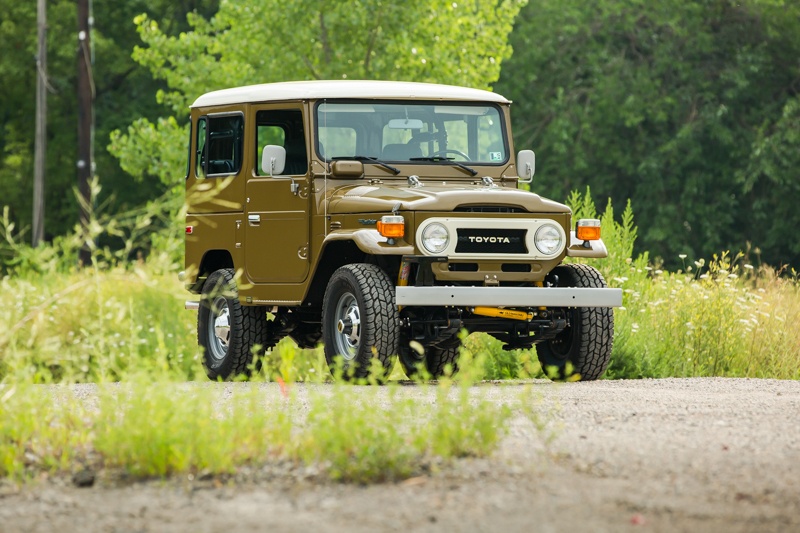
1978 Toyota FJ40 Land Cruiser
Courtesy of LBIlimited.
The origins of the Toyota Land Cruiser date back to a time where the world was in complete chaos and turmoil as the Second World War ravaged through the European nations with what at the time seemed to be a war without end. Post WWII presented the Japanese with less than ideal economic conditions with a massive rise in inflation causing day to day life for citizens to become impoverished and yearning. Automotive companies were troubled with trying to obtain funds and forced to go under constant revision of production plans as a result of poor economic conditions and the increase in emission and safety regulations. Then in 1950 the Democratic People’s Republic of Korea (North Korea) invaded the Republic of Korea (South Korea) without warning and thus began the Korean War.
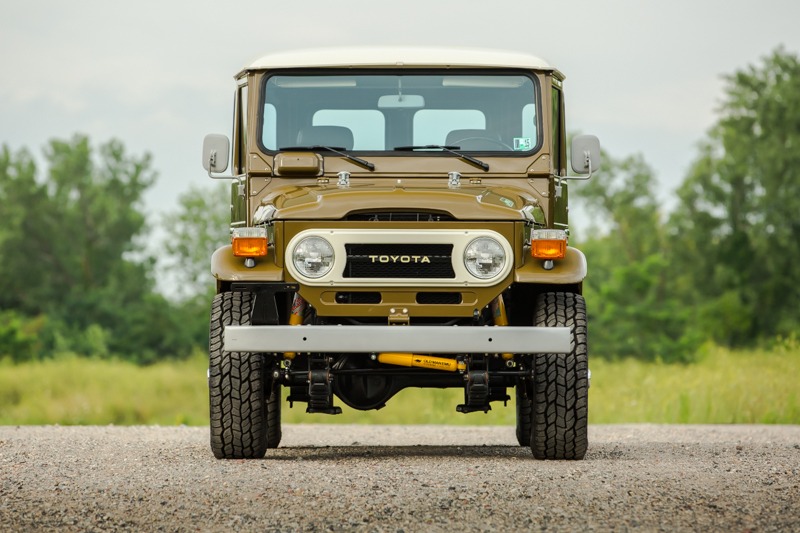
Due to the Korean War, all military production was in full swing with a large demand for military trucks in great numbers. The U.S. military requested that Japanese automakers produce prototypes for compact, 4 wheel drive trucks and the founder of Toyota, Kiichiro Toyoda, responded. Toyota sought this as an opportunity to gain some economic traction as well as make their brand known throughout the world. In 1951 they developed a truck that had a B-type gasoline powered, water cooled, in-line 6 cylinder engine that was installed on a SB-type chassis. The looks were inspired by the Jeeps during that time period which were a common sight in Japan and had become the icon for 4×4 vehicles. This inspired the name of the prototype to be the Toyota Jeep and furthermore, merging the B-type engine with Jeep came about “BJ”.
After 2 years of price and specification negotiations, the decision to implement the BJ into large scale production was put into action. In 1953, Toyota Jeep BJs rolled off the assembly line and the orders for this vehicle began to pile up. With its quickly growing popularity, the Willys Company, whom produced the original Jeep, responded with trademark violation claims in 1954. The Director of Technology at the time, Hanji Umehara, took the initiative by renaming the Toyota Jeep BJ the Land Cruiser. It was certainly a vehicle that held up to its name, for its durability and off-road applications were unparalleled by anything else on the market.

The foundation was set and you could say the rest was history. The global acceptance of the Land Cruiser made it iconic and led to its continued development year after year. The next generation of Land Cruisers was the 20 series which hosted new features such as improved styling, a more powerful 3.4L and 3.9L engine, more comfortable interiors, as well as an optional diesel engine to name a few. The 40 series came about in 1960 and ended in 1984, giving way to the 70 series. This brings us to the vehicle on offer.
The particular example here is a 1978 Land Cruiser FJ40, chassis #FJ40-264967, sporting a complete nut-and-bolt restoration by Scott Gessik of Restored FJ40s in Oregon. They strictly specialize in Toyota Land Cruiser FJ40s and this example is a testament to their magnificent work and attention to correctness. Over $46,000 was invested in restoration cost, solidifying the quality of the work completed. Upon our initial assessment of the vehicle, we were immediately blown away by the caliber of the restoration which is ultimately why we chose to welcome this example into the LBI Stable.
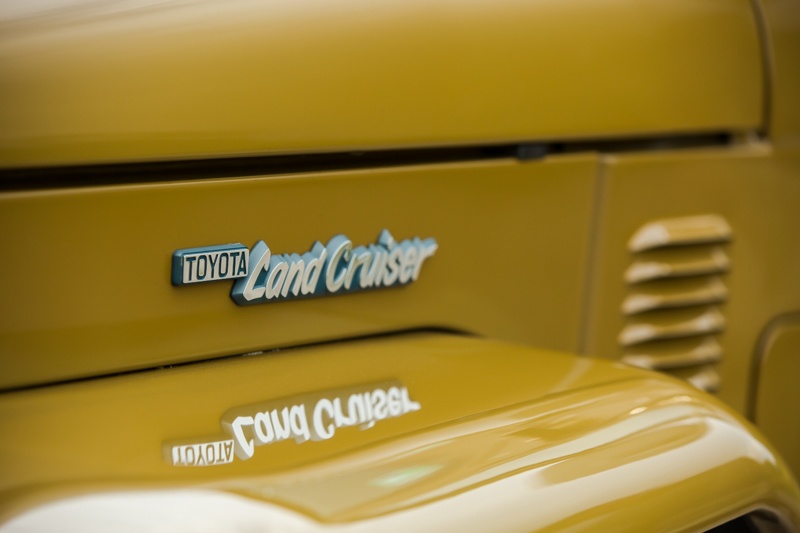
This example has traveled only 700 miles since the restoration and surely shows it. The truck has been painted a striking olive green accompanied by its refinished white fiberglass hard top, complementing the rest of the vehicle nicely. The front and rear bumpers have been freshly painted and the few exterior chrome pieces have been refinished. Under close inspection, there is not one flaw that is worth noting in terms of the paint. Due to the restoration being so recent, the paint possesses oceans of depth and would be greatly admired at any show. As one’s eyes continue to analyze the exterior, the rubbers appear fresh and supple, all sealing properly along the crisp glass. Taking a step back the fitment on this truck is spot on, for the seams and gaps are all consistent and even throughout. The doors and bonnet lid all open and close without hassle, making a solid “thud;” unaccompanied by any rattle or other audible noises.
Upon entry of the truck, a quick glance at the door jams reveals nothing but cleanliness credited to very capable restorers. The interior itself is finished in gray vinyl that coincides to the correct factory color for this vehicle. The original gauges have been reconditioned and fitted along with all the electronics which are fully functional, reading accurately. Going through the interior, one will notice all knobs, handles, switches, and levers work appropriately with no fiddling necessary. In addition, the dash has been freshly painted and flows nicely with all the restored components it houses.
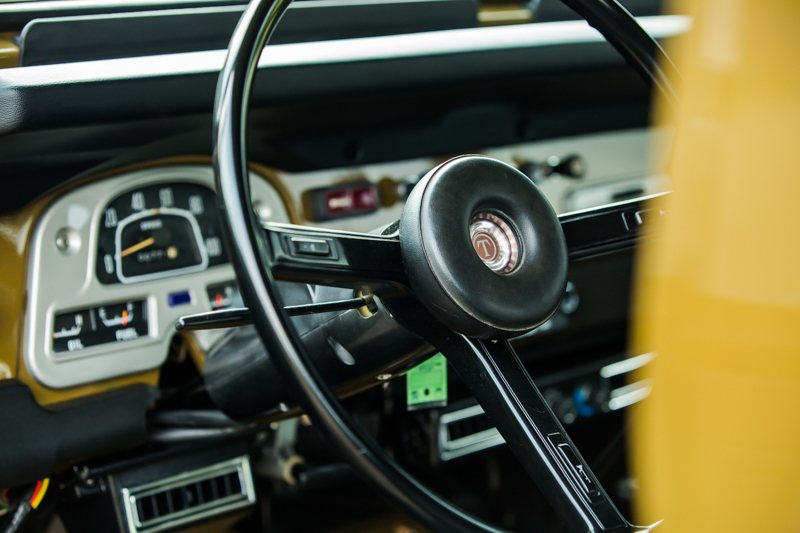
Relocating to the front of the vehicle, opening the bonnet exhibits a tidy engine bay that shows phenomenally, housing its completely rebuilt 4.2L in-line 6 cylinder engine. The engine bay is saturated with evidence of a proper restoration that can be appreciated by any enthusiast. All the workings have been replaced or reconditioned with no expenses spared. Every hose, clamp, and mount has been addressed with all repairs executed with precision and factory correctness in mind.
Making our way to the back of the vehicle, an item to take notice of are the newly restored wheels which have been painted gray, sitting comfortably on new heavy duty cooper tires. The small diameter wheel combined with the large tires definitely contributes to this vehicles off-road look and appeal. The rear space showcases two drop down seats that have been newly reupholstered in the correct factory colors. The roll bars that surround the seats have been re-coated and have had the factory padding installed. Another item to note is the floor heater which is unique to these vehicles and was a persuasive option in period. An appreciated upgrade that will be noticed is the improved audio system that has been tastefully integrated while remaining original in appearance. Overall, the rear space is a fairly nice place to be and jives with the quality of the rest of the vehicle.
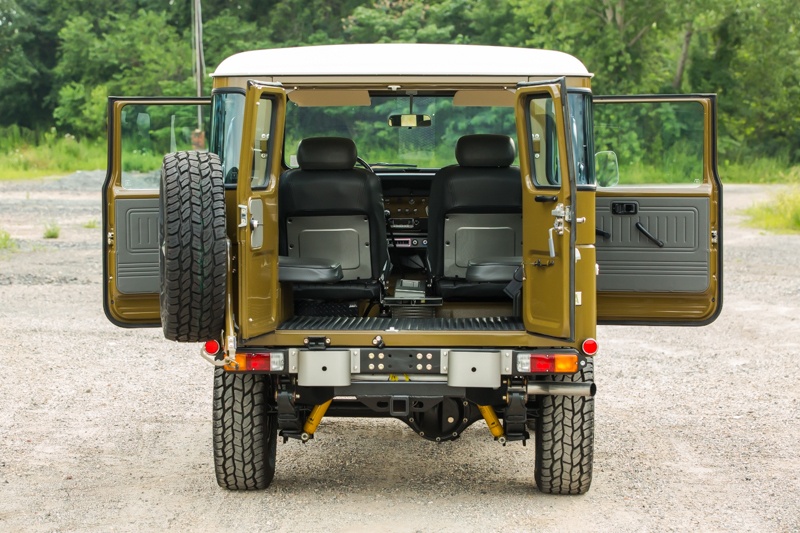
Inspection of the undercarriage of this vehicle will reveal a new OEM suspension that includes coil springs, shocks, and hangers. All remaining components and the underside itself has been diligently cleaned and repainted as well as a layer of undercoating neatly applied per original factory build specification. Stickers from the new suspension still remain on the shock absorbers and leaf springs, attesting to the young restoration.
As far as the drivability of this Land Cruiser is concerned, it was without a doubt meant for off road use. It does not provide the most comfortable ride on the street but these vehicles shine on rough terrain. The vehicle starts with ease and runs quietly without any smoke. All major systems preform flawlessly, the clutch operating as it should followed by smooth gear changes. The oil pressure remains at an acceptable reading and builds with acceleration while the water temperature remains constant. Once the destination is reached, a firm press of the brake pedal will bring the driver to a complete and uneventful stop.

In conclusion, this FJ40 Land Cruiser has been gone through in excess by more than capable hands, leaving it challenging to have any quarrels with its condition, even upon careful inspection. According to its origins, the Toyota Land Cruiser came about as an underdog trying to fill the massive shoes of the 4×4 off-roading Jeeps that had already won over the public. It excelled during its time and surpassed the Jeep in performance, altering the consumer preference for 4×4 trucks to be in favor of the mighty Land Cruiser. Today, the Land Cruiser has assumed an icon status and has been aggressively appreciating in the market creating a massive investment potential. The example on offer sets the bar high, for the attention to detail paired with the in-depth knowledge and research conveyed in the restoration goes above and beyond to capture only the most accurate and precise end product. Representative of true craftsmanship and ultimately one of the best we have witnessed from every aspect, this example would not only be an educated purchase and lucrative investment, but also a vehicle that can be enjoyed off-road.


